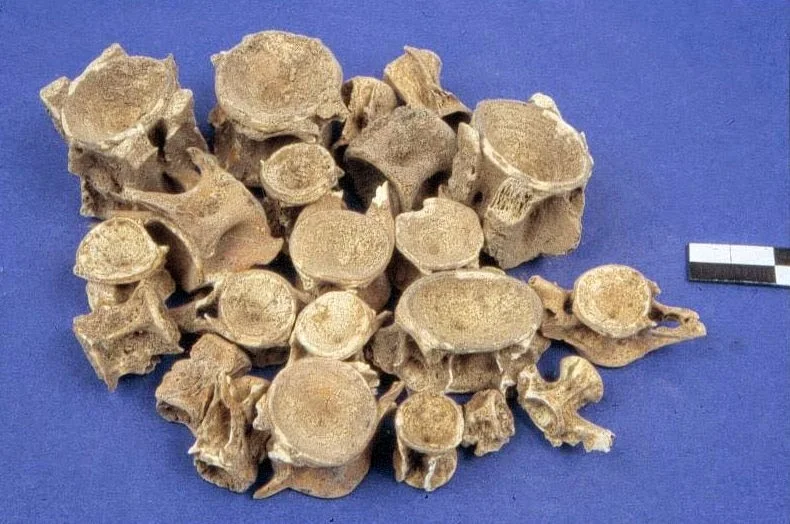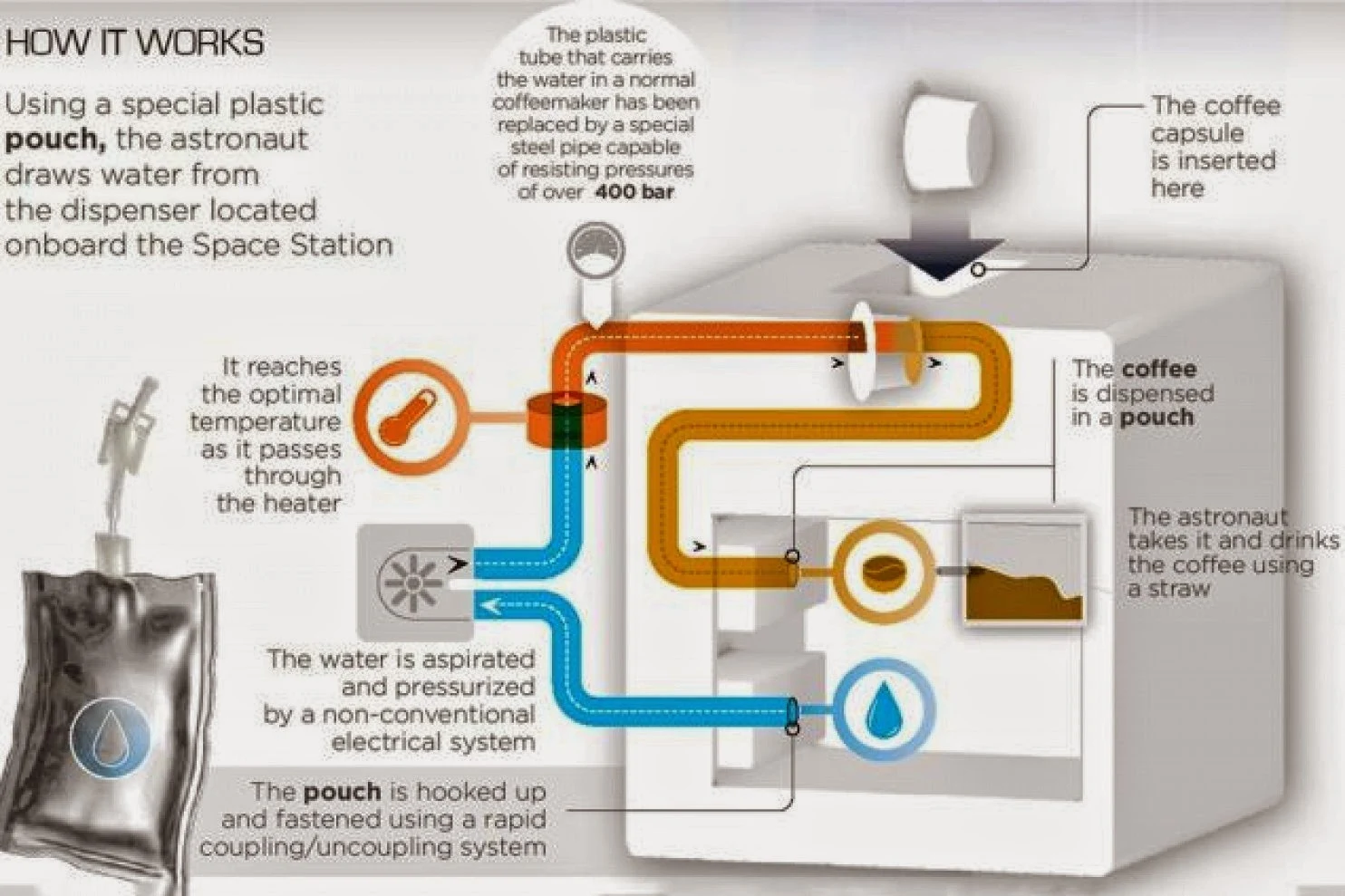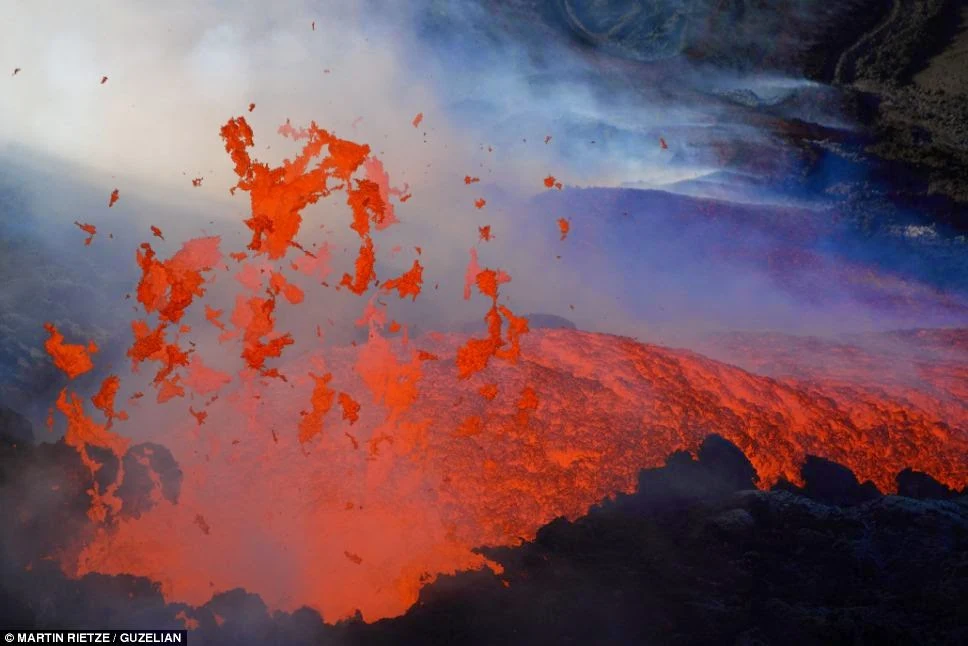Δεν
ήταν «τυχαίος» ο ψαράς του Ακρωτηρίου της Θήρας. Οι Σαντορινιοί έφτιαχναν μέχρι
και πάστα ψαριού! “Little Fisherman”. Wall painting, Akrotiri, Thera.
The fisherman holds dolphin fish (Coryphaena hippurus) and little tunnies
(Euthynnus alletteratus). The coastal communities that lived around the Aegean
exploited the riches of the sea from very early in their history. This
relationship was expressed with a large variety of fishing ways and choices
which reflect the character of the local ecosystems and the interests and
priorities of the local communities. The roots of the fishing traditions of the
Aegean, which are still found along its coasts, are to be found in prehistoric
times, from the Mesolithic to the Bronze Age.
Η
θάλασσα έτρεφε τους Έλληνες από τα προϊστορικά χρόνια, με τους ροφούς, τις
σκορπίνες και τους ζαργούς να είναι πρώτα στις προτιμήσεις τους, τα όστρακα να
αποτελούν πρώτη ύλη για τη δημιουργία κοσμημάτων και η μεταποίηση να έχει
προχωρήσει ακόμη και στη δημιουργία πάστας ψαριού!
Πολύτιμα
στοιχεία για την αλιεία και τα αλιευτικά προϊόντα στο προϊστορικό Αιγαίο
περιλαμβάνει η ομιλία της Δήμητρας Μυλωνά, από το Ινστιτούτο Αιγαιακής
Προϊστορίας για την Ανατολική Κρήτη στο 15ο Πανελλήνιο Συνέδριο Ιχθυολόγων που
αρχίζει σήμερα στη Θεσσαλονίκη και διοργανώνεται από τον Πανελλήνιο Σύλλογο
Ιχθυολόγων Δημοσίου.
Talismanic seal
with crab, ca. 1450 BC (CMS VIII 062). The oldest evidence for the systematic,
complex and elaborate exploitation of the aquatic resources of the Aegean sea
dates to the 11th millennium before present. That was the end of an era of
extreme environmental changes and the beginning of the Holocene. This period is
conventionally called the Mesolithic and some environmental issues that pertain
to this period are important for the fishing activity at the time. It appears
that the Black Sea opened to the Aegean and the rest of the Mediterranean just
then. This event, in combination to an increased discharge of the large rivers
of the Northern Aegean (due to higher precipitation at the end of the Ice Age)
led to a marked increase of nutrients concentration in the waters. Culturally,
the Aegean coasts were sparsely occupied by communities of hunter-gatherers and
fishermen. There is unequivocal evidence that those people were technically
able to cross considerable distances between the mainland and certain islands
using boats.
Το
ταξίδι στην αλιεία του αιγαιακού χώρου έχει αφετηρία τουλάχιστον την 11η
χιλιετία, όταν ολοκληρώνονται οι περιβαλλοντικές αλλαγές, ανοίγει η Μαύρη
Θάλασσα προς το Αιγαίο και αυξάνει ο ευτροφισμός των νερών του.
Neolithic ornaments
made of thorny oyster shell (Spondylus gaederopus) (Photo: Fotis Ifantidis). The
exploration of prehistoric fishing in the Aegean is based on several lines of
evidence. Fish bones, sea shells and remains of other marine organisms are
regularly found in archaeological excavations and inform us on what people
caught and gathered from the sea. The fishing tools, also found in excavations,
as well as the illustrations in art inform us on the catches, on fishing
techniques and on the people behind the act. Natural sciences, including
ichthyology, marine biology, oceanography and ecology add extra dimensions to the
understanding of ancient fishing and shellfish gathering. Additionally,
anthropology and ethnography provide analogies that help in our quest for the
understanding of the inter-relations between humans and aquatic resources.
Η
έρευνα έχει δείξει ότι οι παραλίες του Αιγαίου ήταν ένας χώρος
αραιοκατοικημένος από κοινότητες κυνηγών/τροφοσυλλεκτών και ψαράδων. Όμως οι
κάτοικοι φαίνεται ότι μπορούσαν να διαπλεύσουν σημαντικές αποστάσεις μεταξύ
ηπειρωτικής χώρας και νησιών.
Σημαντικές
πληροφορίες για την αλιεία κατά την προϊστορία, πέρα από άλλες πηγές, δίνουν
δύο σπήλαια, στο Φράγχθι Αργολίδας και στο νησί Γιούρα στις Σποράδες, καθώς και
ένας ανοιχτός οικισμός στον Μαρουλά Κύθνου.
Χιλιάδες
ψαροκόκαλα
Fish bones form the
Mesolithic strata in the Cave of Cyclope, Youra. Three archaeological sites
provide rich data on the issue of fishing and shellfish gathering at this time:
the Franchthi Cave in the Argolid, the Cave of Cyclope at Youra and the open
air settlement of Maroulas on Kythnos. During their excavation there have been
collected tens of thousands of fish bones and scales, sea shells and bones of
sea mammals and sea birds.
Στα
σπήλαια συλλέχθηκαν δεκάδες χιλιάδες ψαροκόκαλα και λέπια, χιλιάδες όστρακα
αλλά και οστά από θαλάσσια θηλαστικά και ψαροπούλια. Τα ψάρια που πιάνονταν
στις δύο αυτές θέσεις ήταν κυρίως παράκτια, μεσαίου μεγέθους· ροφοί, σκορπίνες,
χριστόψαρα, χειλούδες αλλά και συναγρίδες, λυθρίνια, σαργοί και άλλα μέλη της
οικογένειας των Σπαριδών ήταν τα πιο κοινά. Μια άλλη κατηγορία ψαριών ήταν τα
ευρύαλα, με τους κέφαλους να κυριαρχούν, ενώ οι κάτοικοι παραθαλάσσιων περιοχών
του Αιγαίου δεν έλεγαν όχι και στα μεταναστευτικά είδη, όπως τα ψάρια της
οικογένειας των Σκομβριδών. Παρ' ότι μπορούσαν να πιάσουν τόνους, μεσαίου ή
μικρού μεγέθους, προτιμούσαν μικρότερα είδη.
Bone fish hooks
from the Mesolithic strata in the Cave of Cyclope, Youra. The excavation in the
Cave of Cyclope also produced a number of fish hooks, made of bone and antler.
Some of these had already attained the typical, and apparently very successful
hooked shape that survived to the present day while the configuration of
others, of a bi-pointed shape, has been forgotten in the Mediterranean but
survives in other parts of the world. The excavation in the Cave of Cyclope at
Youra also produced the remains of euryaline fish (fish that tolerate
considerable fluctuations in water salinity), such as the gray mullets and
migratory fish, mostly of the Scombridae family. Although they regularly
captured large tunas (Thunnus sp.) with a special preference to the medium of
small size fish, they mostly targeted the smaller species of the Scombridae
family, such as the mackerels, the pelamids, the little tunnies etc.
Στο
Σπήλαιο του Κύκλωπα, στα Γιούρα, βρέθηκαν αγκίστρια δύο τύπων, φτιαγμένα από
οστό και ελαφοκέρατο. Στο ίδιο σπήλαιο παρατηρήθηκε ότι από ορισμένα ψάρια,
όπως τα τονάκια (Euthynnus alletteratus),
έλειπαν συστηματικά τα οστά του κεφαλιού και οι πρώτοι σπόνδυλοι. Αυτό
εκτιμάται ότι συνέβη προτού φθάσουν τα ψάρια στο σπήλαιο. Η απομάκρυνση
κεφαλιού και εντοσθίων, τα οποία αλλοιώνονται γρήγορα, είναι παραδοσιακά από
τις πρώτες κινήσεις στη διαδικασία μεταποίησης ψαριών.
An interest to the
storage of presumably preserved fish, is documented at the coastal settlement
of Maroulas on Kythnos, where whole fish were stored in cavities in the floors
of the rounded huts. As in Yioura, some of the heads and first vertebrae are
missing altogether. The same phenomenon has been observed in other Mesolithic
sites on Cyprus and Southern Italy, a fact that indicates the existence of a
common Central and Eastern Mediterranean tradition in the preservation of fish.
Το
ενδιαφέρον για μεταποίηση και αποθήκευση ψαριών εικονογραφείται στο μεσολιθικό
οικισμό του Μαρουλά στην Κύθνο, όπου ολόκληρα ψάρια έχουν βρεθεί αποθηκευμένα
σε ημιυπόγειες κυκλικές καλύβες. Πάλι, σε ορισμένες περιπτώσεις, λείπουν
εντελώς τα οστά του κεφαλιού και οι πρώτοι σπόνδυλοι.
Κύπρος,
Ιταλία
Marine style jag,
ca 1500 BC with octopus, rocks and seaweeds (Source: Museum Syndicate).
Μαρτυρίες
από άλλες μεσολιθικές θέσεις στην Κύπρο και τη νότια Ιταλία υποδηλώνουν ότι την
εποχή αυτή έχει αναπτυχθεί κοινή παράδοση μεταποίησης ψαριών σε ανατολική και
κεντρική Μεσόγειο.
Η
συστηματική αλιεία μεγάλων ψαριών κατά τους μεσολιθικούς χρόνους δεν φαίνεται
να επαναλαμβάνεται στις μετέπειτα χιλιετίες. Από τη νεολιθική εποχή, στην 7η
χιλιετία π.Χ., με την υιοθέτηση της γεωργίας και της κτηνοτροφίας ως βασικών
διεξόδων διατροφής, παντού στον ελλαδικό χώρο η εκμετάλλευση υδρόβιων πόρων,
θαλάσσιων, λιμναίων ή ποτάμιων, περιορίζεται. Η κατανάλωση ψαριών, οστράκων και
μαλακοστράκων στη διατροφή δεν ξεπερνά το κρέας (αίγειο, πρόβειο, χοιρινό,
βόειο).
Σε
περιοχές με πλούσια υδάτινα οικοσυστήματα παρατηρείται, ωστόσο, ότι η αλιεία
και η συλλογή οστράκων εξακολουθούν να υφίστανται με παρελθοντικές πρακτικές.
Fish bones of cat
fish (Silurus glanis) and gray mullets (Mugilidae) from the Neolithic
settlement of Kyroneri, near the estuary of Strymon River. Exceptions to this
situation are special locations with rich aquatic ecosystems, where fishing and
shellfish gathering remained important. Even technologies that had their roots
in the Mesolithic, such as the bone fish hooks, were still in use. In the
Neolithic settlement of Dispilio, for example, on the shores of Lake Kastoria,
fishing and gathering of fresh water shellfish were particularly important. The
same is true for another Neolithic settlement, at Kryoneri, near Amphipolis, on
the banks of Strymon river, very near its eustuaries. The Neolithic fishermen
there caught gray mullets and various fresh water fish such as carp, tench,
great catfish and also eels. These eels from Strymon river became very famous a
few millenia later in the markets of ancient Greece. Fishing was also intensive
on various coastal locations, especially on islands, such as at Agios Petros on
Sporades.
Στην
περιοχή της Αμφίπολης, κοντά στις εκβολές του Στρυμόνα, οι κάτοικοι ψαρεύουν εντατικά
ευρύαλα είδη των εκβολών του ποταμού, μεγάλους γουλιανούς και χέλια, για τα
οποία το ποτάμι φημίζεται κατά την αρχαιότητα.
Εντατική
η αλιεία και στις ακτές του Αλιάκμονα, της λίμνης της Καστοριάς αλλά και σε
διάφορες νησιωτικές τοποθεσίες, όπως στον Άγιο Πέτρο στις Σποράδες. Παράλληλα
συλλέγεται πλήθος οστράκων, τόσο για διατροφικούς λόγους όσο και για χρήση στην
Κοσμετολογία, ανταλλαγές κ.ά.
Στην
εποχή του Χαλκού (3η και 2η χιλιετία π.Χ.), η εικόνα για την αλιεία γίνεται πιο
σύνθετη και οι θαλάσσιοι οργανισμοί παίζουν ενεργό ρόλο στο θρησκευτικό και
κοινωνικό τελετουργικό. Στο νότιο Αιγαίο, μαρίδες και γόπες κυριαρχούν, με τα
σπαράκια, τους χάννους, τις καλογρίτσες, τα μικρά λυθρίνια, τους σκάρους να
ακολουθούν. Άλλα μεγαλύτερα ψάρια, όπως φαγκριά, μελανούρια αλλά και ροφοί,
σκορπίνες, λίτσες, τουρνάδες, σελάχια και καρχαρίες, είναι αρκετά κοινά.
Όπως
διαπιστώνεται, τουλάχιστον στο νότιο Αιγαίο, η αλιεία πραγματοποιείται στα ρηχά
νερά πολύ κοντά στις ακτές. Η τεχνολογία περιλαμβάνει χάλκινα αγκίστρια όλων
των σχημάτων και μεγεθών, μικρά δίχτυα, μανωμένα ή μη, πεζόβολα, από τα οποία
επιβιώνουν μόνο τα μολύβδινα βαρίδια και διάτρητες πέτρες που χρησίμευαν ως
βάρη. Υπάρχουν, επίσης, ενδείξεις για τη χρήση κιούρτων αλλά και μεγαλύτερων
παγίδων παρόμοιων με τα θυννεία.
Αλιεία
στα ρηχά νερά
Seal with a fishermen holding his catch, an octopus and a fish (CMS VI 183). The collection of
shellfish for food follows a similar pattern, taking place in the shallows. Top
shells, limpets and crabs were regularly eaten, occasionally in very large
quantities. A clear differentiation is, however, evident. Fishermen turned to
deeper waters to catch molluscs of a special use. Pen shellfish, purple
shellfish and tritons are such examples. The pearly interior of the pen shells
were cut and used as inlays, the triton shells, modified or not, were used as
ordinary ladles or in special circumstances as ceremonial rhyta. The purple
shellfish, from ca 1800 BC onwards, were used in large quantities for the
production of purple dye on an industrial level. These special uses of
shellfish incorporated the sea in spheres other than the nutritional.
Shellfish, and by inference the sea itself were increasingly incorporated in
the sphere of social competition and ideology.
Η
συλλογή κοχυλιών και οστρακόδερμων για κατανάλωση ακολουθεί το ίδιο μοτίβο.
Στρόμβοι, πεταλίδες και καβούρια καταναλώνονται συστηματικά και κατά τόπους σε
μεγάλες ποσότητες, αλλά οι ψαράδες στρέφονται σε βαθύτερα νερά όταν στοχεύουν
σε είδη οστράκων ειδικής χρήσης. Οι πίνες χρησιμοποιούνται για την παραγωγή
διακοσμητικών πλακιδίων, οι τρίτωνες για την κατασκευή αγγείων μετάγγισης υγρών
ή την κατασκευή τελετουργικών ρυτών και οι πορφύρες, από το 1800 π.Χ. περίπου,
χρησιμοποιούνται σε μεγάλες ποσότητες για την βιοτεχνικού τύπου παραγωγή
πορφυρής βαφής...
Fish bones from
Akrotiri, Thera. They are all from very small fish of the shallow waters. In
the Bronze Age, people all along the Aegean caught and ate mostly small inshore
fish. In the Southern Aegean the picarels and bogues were the most common
species, with small annular sea breams, combers, damsel fish, small pandoras
and striped sea bream as well as groupers, scorpion fishes, leer fish,
baracudas, sting rays and sharks are fairly common. In other words, fishing the
Aegean was done in the shallow waters, very near the coasts. The seasonal,
migratory fish, such as the tunas and the smaller members of the Scombridae
family are much scarcer in the southern part of the Aegean than in the northern
part. Fishing tools in this era, as these are known from their material remains
and artistic representations appear to be adopted to this fishing zone. The
fishing tool kit of the Bronze Age fishermen included bronze fish hooks of
various sizes, shapes and configurations, small nets and also larger seine
nets, baited baskets and stationery fish traps. Part of the catch were
processed to make preserved fish products. The excavations at Akrotiri, Thera,
provide ample evidence that the preservation of fish was an elaborate process
that created a variety of different products.
Η
μεταποίηση των αλιευμάτων μαρτυρείται και από τον εύρωστο οικισμό του
Ακρωτηρίου στη Σαντορίνη, που καλύπτεται λόγω της έκρηξης του ηφαιστείου από
τέφρα γύρω στα 1650 π.Χ. Κατά την ανασκαφή αποκαλύπτεται ένα εξαιρετικό εύρημα,
ένα μικρό αγγείο που περιείχε πάστα ψαριού. Πρόκειται για μείγμα μικρών ψαριών,
εκ των οποίων έχουν αναγνωριστεί υπολείμματα ενός μικρού σελαχιού και οστά
μαρίδων ή γοπών. Η πάστα περιέχει επίσης σπόρους δημητριακών κ.ά. Το προϊόν
είναι παρόμοιο με το γνωστό από την κλασική και ρωμαϊκή αρχαιότητα γάρο.
Στο ίδιο σημείο της ανασκαφής βρίσκονται τα υπολείμματα μεγάλων αποξηραμένων συναγρίδων. Τα ψάρια έχουν ανοιχτεί, η σπονδυλική τους στήλη έχει αφαιρεθεί, έχουν πιθανόν παστωθεί, αποξηρανθεί και κρεμαστεί σε μια αρμαθιά. Τέλος, στο Ακρωτήρι βρίσκεται και μια τρίτη περίπτωση μεταποιημένων ψαριών. Σε ένα πιθάρι μάλιστα βρίσκονται οστά ολόκληρων φαγκριών, μαζί με υπολείμματα της σάρκας τους και σπόρους σιτηρών!




































%2C_oil_on_canvas%2C_133_x_154_cm%2C_Kunstsammlung_Nordrhein-Westfalen%2C_D%C3%BCsseldorf.jpg)
%2B%2BThe%2BGang.jpg)
%2B(1936).jpg)

